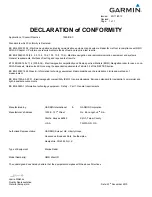
SECTION 10—CASE LAW
10.1
10. CASE LAW
This section is included so radar operators and those
individuals responsible for prosecuting traffic arrests can
familiarize themselves with the more important legal cases
involving the use of traffic radar. To obtain additional
information on the referenced material, consult your
community’s local law library or the prosecutor’s office.
Since the Raptor RP-1 is a Doppler based traffic radar
system, some older case law is presented because of its
significance to the acceptance of the Doppler principles as
well as the basic requirements of the tuning fork test and
operator training.
Reference A – State vs. Dantonio (N.J.) 1955 115 A2d35,
49 ALR 2d 460. Landmark case on the acceptance of the
Doppler principles as used in traffic radar.
Reference B – State vs. Shelt (Ohio) 1975 75-D O-3682, L-
75-166. Establishes that the courts may take judicial notice
of the reliability of moving radar.
Reference C – Honeycutt vs. Commonwealth (KY) 1966
408 SW 2d 421. Court establishes that a tuning fork test is
an accurate method of testing the accuracy of a radar unit
and along with the visual observations of a trained operator,
is an accurate means of determining the speed of vehicles.
Reference D – Krueger, Pantos and Payne vs. State of
California 1986 (class action suit – suppression hearing on
radar) 887092, DP44339 and DP54571. Court ruled that a
properly built and tested radar used by a trained operator
can accurately determine the speed of vehicles. The judge
dismissed each of the defendant’s claims that outside
influences render the radar readings inaccurate in the
moving mode of operation. He ruled that proper classroom
and field training enables an officer to avoid any false or
inaccurate readings due to outside influences.
















































